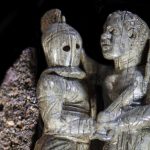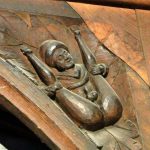Central African Skull Lyre
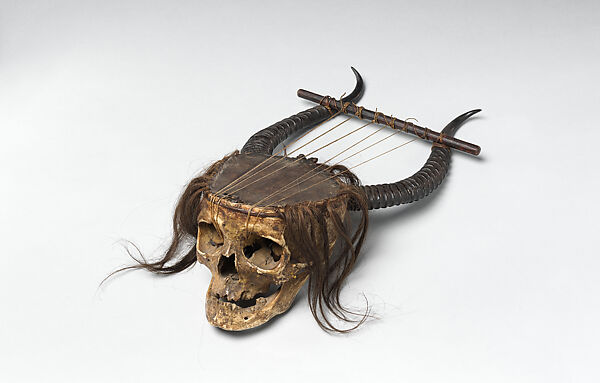
Late 19th century
Wood, human skull, animal horn, sinew, hide, hair
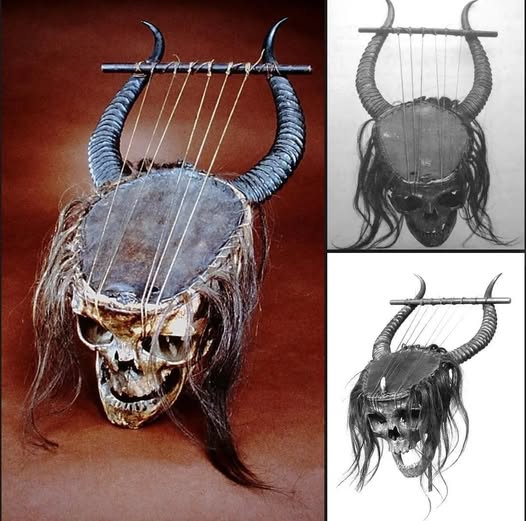
This rare and unsettling stringed instrument, often referred to as a “Skull Lyre,” is an object of both artistic intrigue and anthropological mystery. Acquired in the late 19th century, it was originally cataloged in 1906 as coming from South America. Later reattributed to Central Africa, the instrument defies classification within any known regional musical or ritual tradition.

Crafted from a human skull, complete with animal horns and hair, the lyre’s body is covered with a stretched animal hide forming the soundboard, and strung with gut or sinew. Its macabre yet meticulous construction has led to much speculation about its function. While some researchers have proposed that it may have been used in secretive or symbolic rituals, there is no direct evidence linking it to indigenous ceremonial practices.
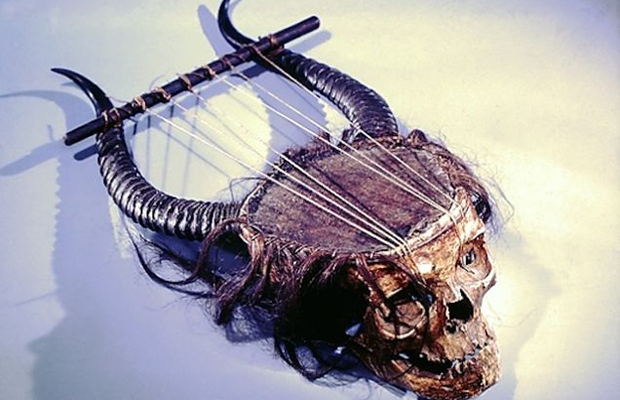
Today, most scholars agree that the lyre was likely a commercial object, crafted by a skilled local artisan for trade with European explorers and collectors during a period of heightened fascination with “exotic curiosities.” As such, the Skull Lyre stands as both a testament to cross-cultural encounter and a reminder of colonial-era commodification of indigenous craftsmanship and spiritual imagery.

